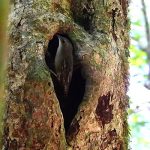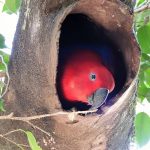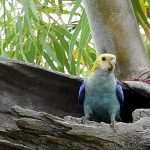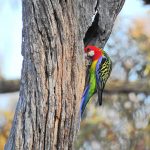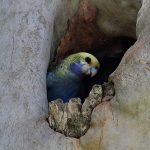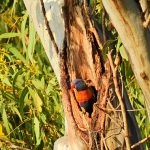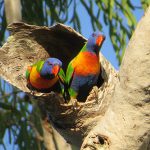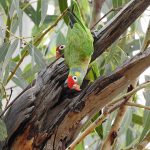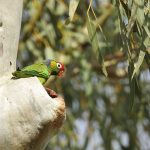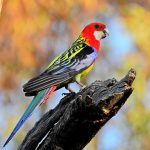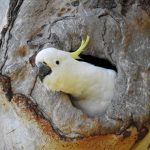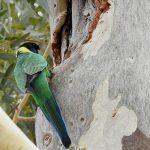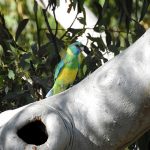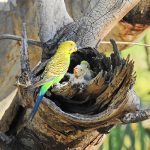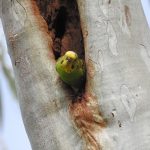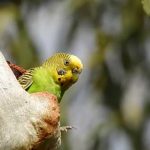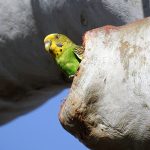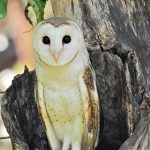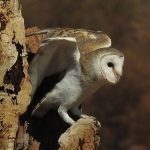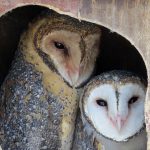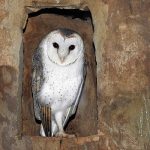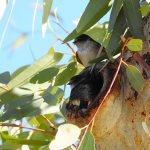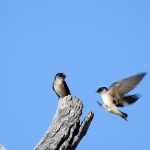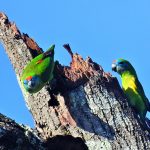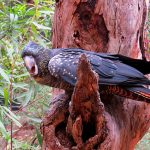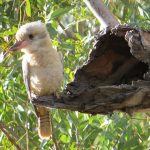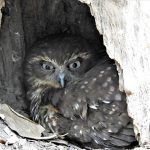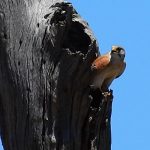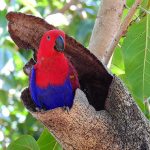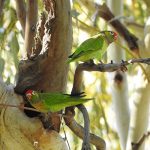CAVITY/HOLLOW NESTERS
Australia is home to a remarkable diversity of birds, many of which have formed intricate relationships with their habitats. Among these, several species rely on cavities or hollow trees for nesting. These secretive spaces, often formed in ancient eucalypts or seasoned woodlands, offer both sanctuary and unique challenges for Australia’s birdlife.
The World Inside the Tree: Why Cavities Matter
Imagine walking through an Australian forest at dawn. The pungent aroma of damp earth hangs in the air, and the muffled sound of a bird echoes from deep within an ageing gum tree. Among the cool, shadowed hollows, new life begins each season. For birds that nest in cavities, these spaces are not just homes—they are essential lifelines.
Hollows serve many purposes:
- Protection: They shield eggs and chicks from predators and harsh weather.
- Stability: The interior of a hollow maintains a more constant temperature and humidity, crucial for the survival of vulnerable young.
- Scarcity: Suitable hollows often take decades to form, making them a prized resource.
Key Australian Cavity-Nesting Birds
Below is a table highlighting some iconic Australian birds that depend on tree hollows or nest cavities:
| Common Name | Scientific Name | Typical Habitat | Hollow/Nest Use |
|---|---|---|---|
| Sulphur-crested Cockatoo | Cacatua galerita | Woodlands, urban parks | Nests and roosts in hollows |
| Laughing Kookaburra | Dacelo novaeguineae | Eucalypt forests, gardens | Nests in tree hollows |
| Rainbow Lorikeet | Trichoglossus moluccanus | Forests, urban areas | Nests in deep hollows |
| Australian Owlet-nightjar | Aegotheles cristatus | Wooded habitats | Day roosts and nests in hollows |
| Powerful Owl | Ninox strenua | Old-growth forests | Requires large hollows for nesting |
| Eastern Rosella | Platycercus eximius | Open woodlands, farmland | Nests in tree and stump hollows |
Life in a Tree Hollow
Inside a nesting hollow, the air is cool and smells faintly of damp wood. The rough inner bark provides grip for clambering chicks, while soft down and chewed leaves line the base. Listeners outside might hear the soft murmur of adults feeding young, contrasted by the gentle rustle of wind in the high branches above.
The Age of Trees Needed for Bird Hollows
Not all trees are created equal when it comes to forming hollows fit for birds. In Australian forests and woodlands, the development of suitable hollows is a slow, patient process—one that unfolds over decades and, often, centuries.
Formation Timeline
- Small hollows: May appear in trees aged 40-100 years, suitable for smaller birds, reptiles, and mammals.
- Large hollows: Needed by bigger birds like the Powerful Owl or Sulphur-crested Cockatoo, usually develop only in trees more than 120 to 200 years old, depending on tree species and environmental conditions.
Below is a summary:
| Tree Age (years) | Typical Hollow Size | Species Likely to Use |
|---|---|---|
| 40 – 100 | Small hollows | Pardalotes, Bats, Gliders |
| 120 – 200+ | Large hollows (20cm+ entrance) | Cockatoos, Powerful Owl, Kookaburra |
Why Do Large Hollows Take So Long?
- Hardwood durability: Many Australian trees, especially eucalypts, have very dense wood, which resists decay.
- Hollow formation: Begins with damage (e.g., storm, fire, termites) and progresses as fungi and insects slowly widen cavities.
- Growth rate: Eucalypts and other native trees grow slowly, so significant hollows only emerge after a long lifespan.
The Importance of Old Trees
When you see a towering gum tree with a gnarled, hollow trunk, you are witnessing a vital habitat that could be older than many generations of people. These ancient giants support:
- Breeding and roosting sites for large birds
- Shelter for mammals and reptiles
- The broader health of the entire ecosystem
Conservation
Because it takes so long for hollows to form, the loss of mature trees today effects bird habitat for centuries to come. Protecting old, hollow-bearing trees is not just about the present; it’s a gift for future generations of both wildlife and people, ensuring that the chorus of Australian birds continues far into the future.
Old trees and their hollows are vital but increasingly rare in the Australian landscape. Urban development, logging, and fire all threaten these essential microhabitats.
What can we do to help?
- Preserve mature trees: Protecting old, hollow-bearing trees is essential.
- Install nest boxes: In areas lacking natural hollows, artificial nest boxes provide alternatives.
- Support conservation initiatives: Join or support groups working to preserve woodland and forest habitats.
Tree hollows and nesting cavities are central to the lives of many iconic Australian birds. By safeguarding these hidden worlds, we not only protect the birds themselves but also preserve the complex, ancient stories woven into our forests and landscapes. Every hollow, each muffled chirp within, is a quiet testament to Australia’s uniquely rich natural heritage.

